In recent times, there has been an uptick in the usage of bidets as an alternative to toilet paper.
Owing to their hygienic, water-efficient, and cost-effective nature, bidets are quickly becoming a mainstay in toilets. And since it can be used for various applications, there are bidets on the market that suit every need.
What follows is a complete guide to the different types of bidets, how they are used, and their effects on personal health and the environment.
What is a Bidet?
Bidets are bathroom fixtures primarily used to clean one’s rear after using the toilet. Most models achieve this through a nozzle that sprays water for washing purposes, with certain exceptions like the freestanding bidet, which usually uses a tap.
Certain types of bidets, mainly bidet converter kits and toilet-bidet combinations, include secondary features that enhance that user’s experience. These secondary features include oscillating nozzles, heated seats, front washers, etc., and are often electrically operated.
Other bidets that do not affix directly to the toilet, such as freestanding bidets, utilize a different operating mechanism for different features. The user may use such bidets to clean other parts of the body as well, such as their feet.
Despite sharing the same basic function, bidets come in a variety of shapes and sizes. These bidet types fulfill various purposes and come equipped with a myriad of secondary features that suit different situations.
Broadly, these can be categorized into three types: traditional bidets, bidet toilet seats, and bidet attachments. Other bidet varieties can be considered to be variations of these three types, as they share an installation methodology with one of the three.
1. Traditional Bidet
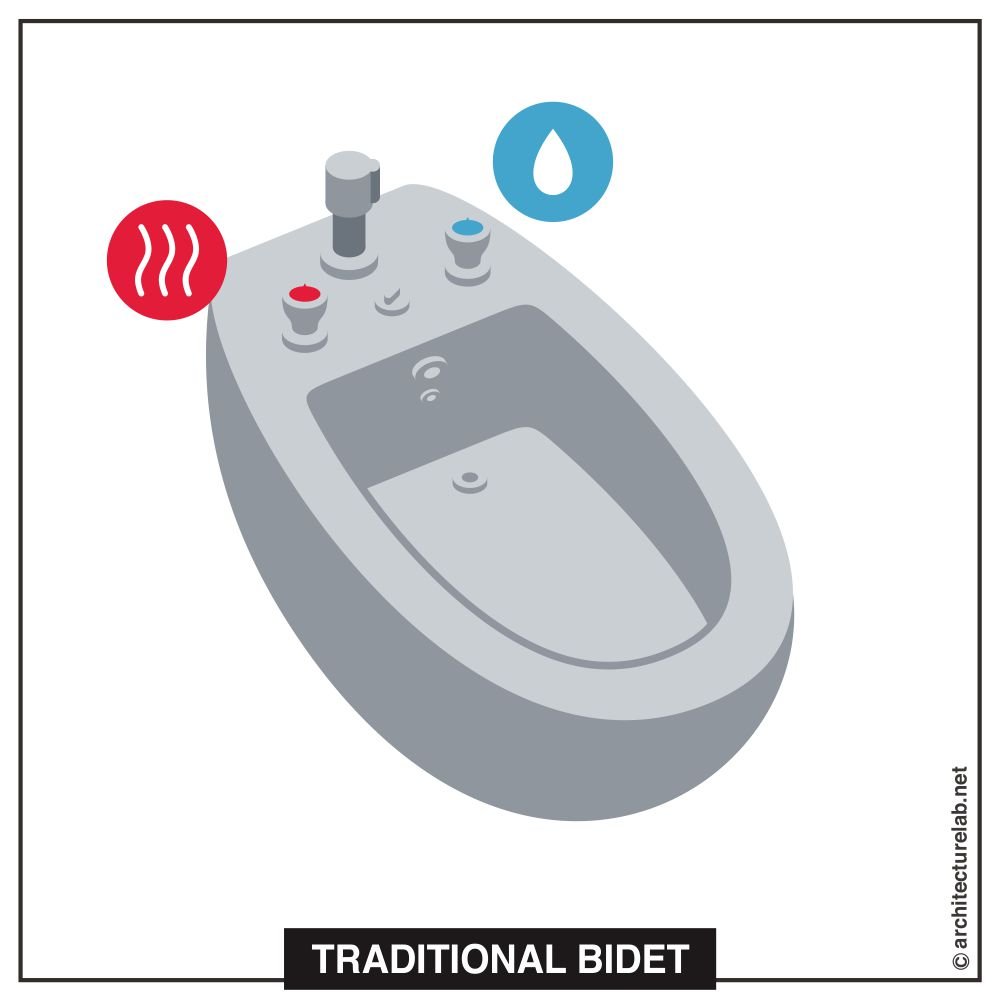
Traditional bidets are fixtures that resemble the structure of a toilet seat with a faucet or a nozzle on its rear end.
Standalone bidets were first introduced in the early 1700s in France and were named so because of the manner in which the user mounts them. Derived from the French word for pony, standalone bidets require users to take a straddling position to use the bidet mount.
Typically, traditional bidets are installed next to the existing toilet bowl in a parallel position. Certain models may include a moveable nozzle or multiple faucets for water temperature control based on the user’s preferences and plumbing connections.
Due to the extra space required for their installation, both wall-mounted bidets and floor-mounted standalone bidets are rarely used in smaller bathrooms. The amount of space required for a floor-mounted standalone bidet, in particular, makes it a less desirable option.
2. Bidet Toilet Seat
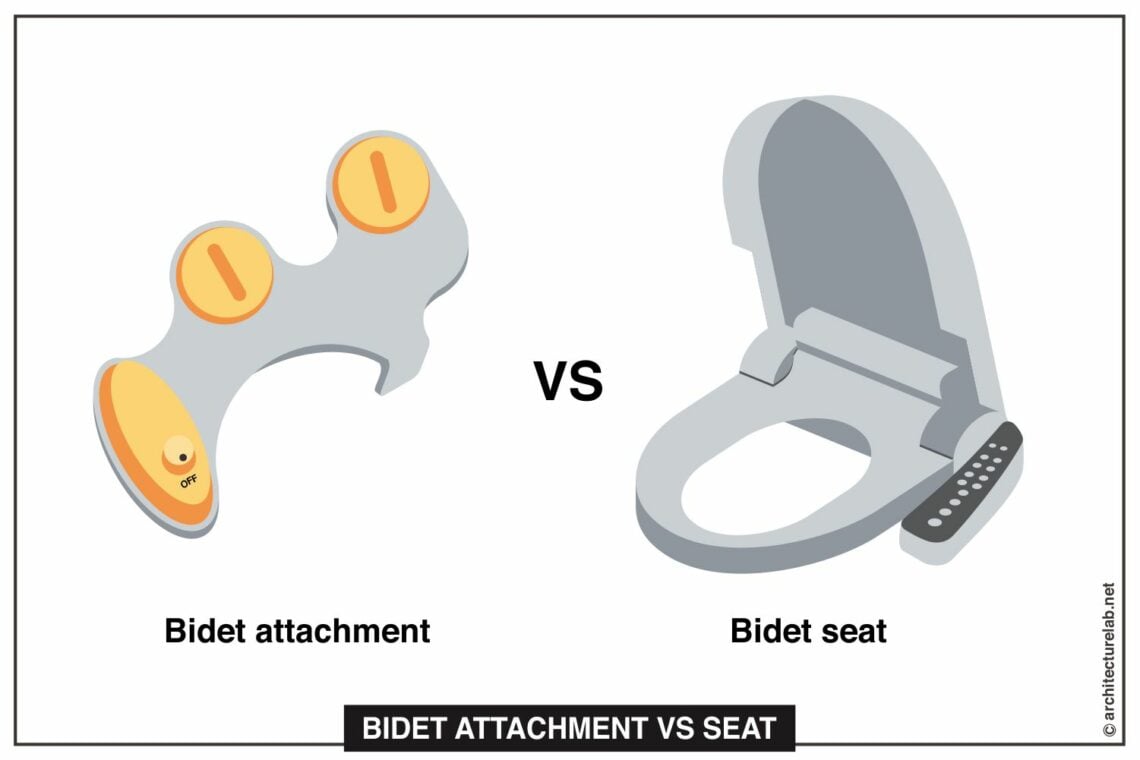
Bidet toilet seats are affixed directly on top of the toilet bowl by replacing the existing toilet seat instead of attaching to it to serve as a bidet attachment. Such bidets connect directly to the water source, allowing the user to have access to a pressurized spray of water on demand.
These models are also the type of bidet to have the highest number of variations, owing to the number of features that come with them. Offering both electrically-operated and mechanically-operated models, bidet toilet seats can offer a large variety of features.
Some of the common features found in a bidet toilet seat include the following:
- Automatic lid opening/closing Mechanism
- Body sensor
- Oscillating spray
- Tankless water heater
- Remote control
- User presets
- Self-cleaning mechanism
Bidet toilet seats are often easy to install and require very few adjustments to the existing plumbing system. Combined with a low maintenance requirement and a user-friendly design, bidet toilet seats are one of the more popular bidet options available on the market.
The non-electric variants have a few features that may make them preferable for some, such as a robust operating mechanism and no power requirements. They are also more budget-friendly, which makes them suitable for those on a budget.
3. Bidet Attachment
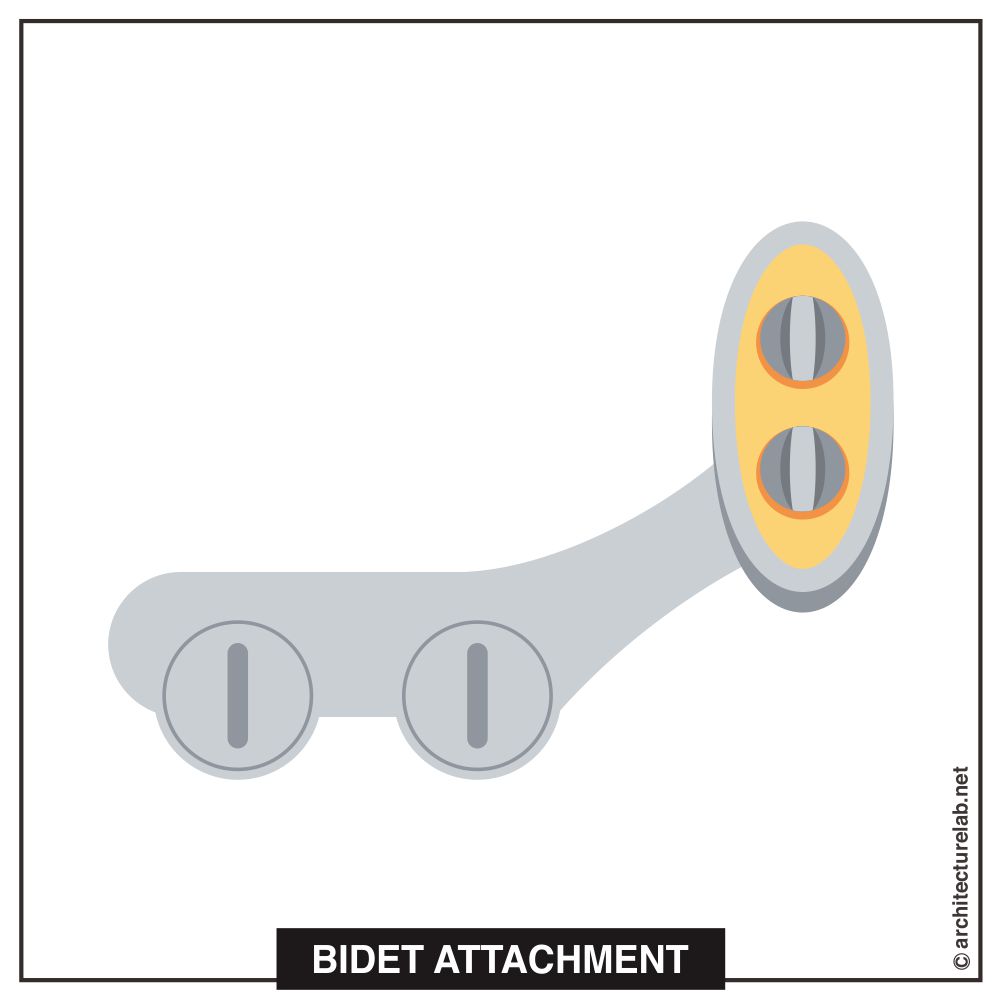
Bidet attachments are connected to a water source and are mounted close to the toilet bowl without taking up much space.
These are non-electric options that come with additional features based on the plumbing system of the bathroom. Cold and hot water, pressure regulation, and spray angle are some of the secondary features that these bidets offer.
Since these plastic attachments are largely non-electric, they lack more advanced features that are more commonly seen in bidet toilet seats. Bidet attachments offer no way of drying or finer temperature control beyond what the fixtures they connect to allow. Consequently, they are the most affordable variant of non-portable bidets.
4. Handheld Bidet
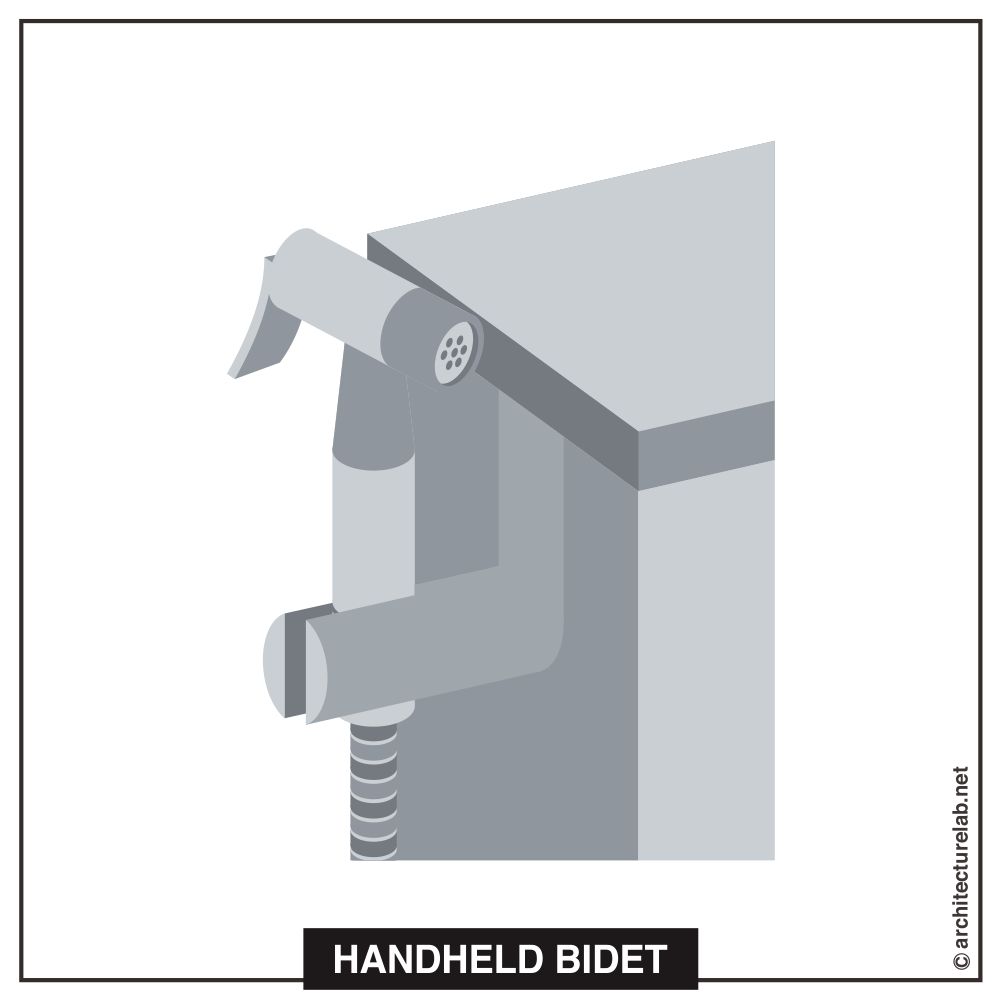
Handheld bidet sprayers are spray nozzles that can be considered bidet attachments. These implements are positioned over the desired area and used with the lever attached to the back of the bidet sprayer.
Typically, a handheld bidet sprayer comes with a T-valve, a hose, and a nozzle that connects directly to the toilet’s water supply. They use the plumbing system to generate water pressure adequate for cleaning sensitive areas.
Due to their hand-operated nature, such attachments can be used to clean the bathroom as well. A user may cleanse bathroom walls and areas using a handheld bidet sprayer that may be unreachable with a brush otherwise.
That said, a notable drawback of handheld attachments is their lack of built-in water heating options. Meaning, the user must connect it to a warm water supply or tank, which may not always be possible.
5. Portable Bidet
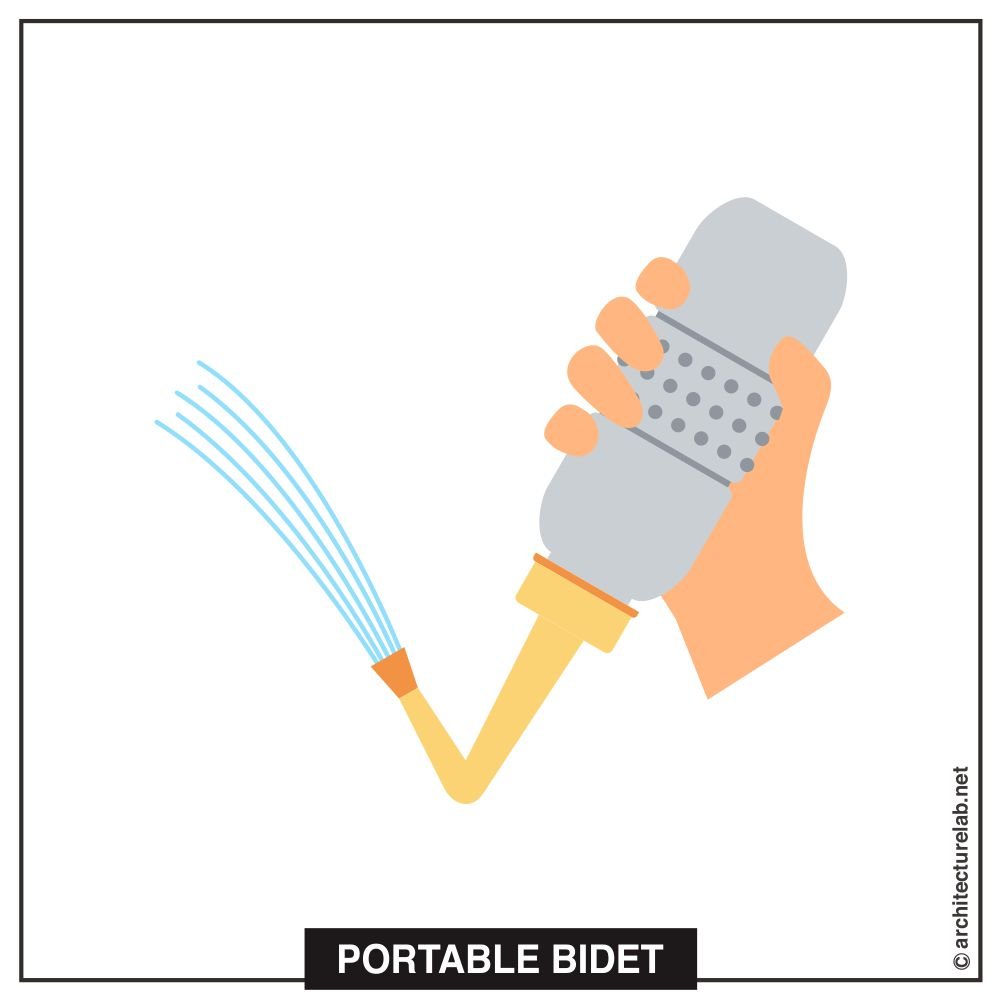
Designed for frequent travelers, a portable bidet is a convenient option for those who prefer not to use toilet paper for hygienic or comfort reasons.
Most often seen in the form of a small bottle, portable bidets can be refilled and reused as many times as the user desires. Once filled completely, they can be squeezed to generate water pressure that is soft enough for effective cleansing.
Additionally, non-electric portable bidets are often collapsible, making them rather travel-friendly.
On the other hand, portable electronic bidets are a compact but non-collapsible option for travelers who prefer greater water pressure for cleansing. They come with a power button and spray mode, providing the user with a higher degree of control over temperature and pressure settings.
A third variety of portable electric bidets is the bottle-top camping bidet which affixes directly to the top of an ordinary water bottle. This electronic bidet type may not be the best option for travelers who have access to an ordinary restroom, but it may fit a camper’s needs.
6. Under-The-Rim And Over-The-Rim Bidet
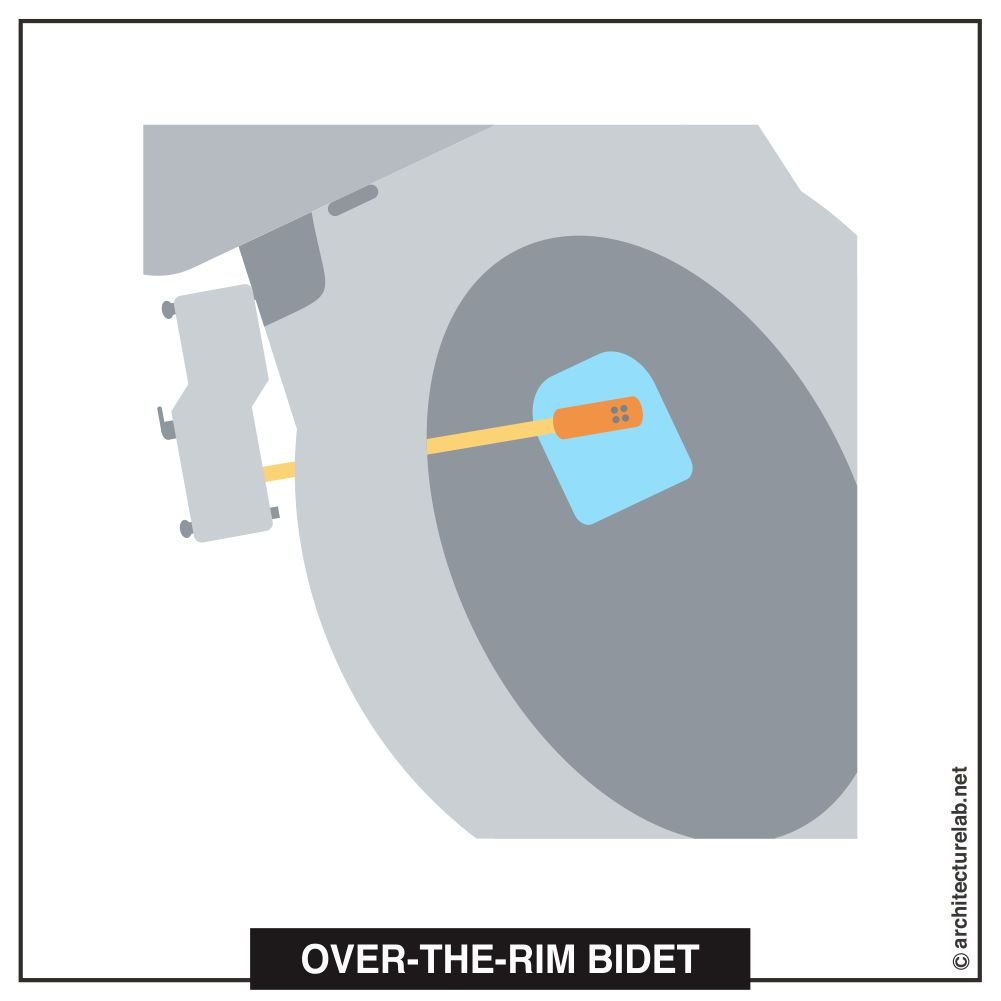
There is yet another way of classifying bidets into two groups that differs from the traditional bidets, bidet seats, and bidet attachments. These include over-the-rim and under-the-rim style bidets, the difference between which is the position of the faucet or spraying nozzle.
Over-the-rim bidets are the type of bidet in which water flows down from a faucet positioned above the rim, much like a basin. Traditional bidets, horizontal spray bidets, and certain bidet toilet seats can be considered to be of the over-the-rim style.
On the other hand, the under-the-rim bidets spray water from small nozzles positioned underneath the toilet rim. The most common type of under-the-rim bidet is the vertical spray bidet, which is typically positioned below the rim to squirt water upwards.
7. Shower Bidet
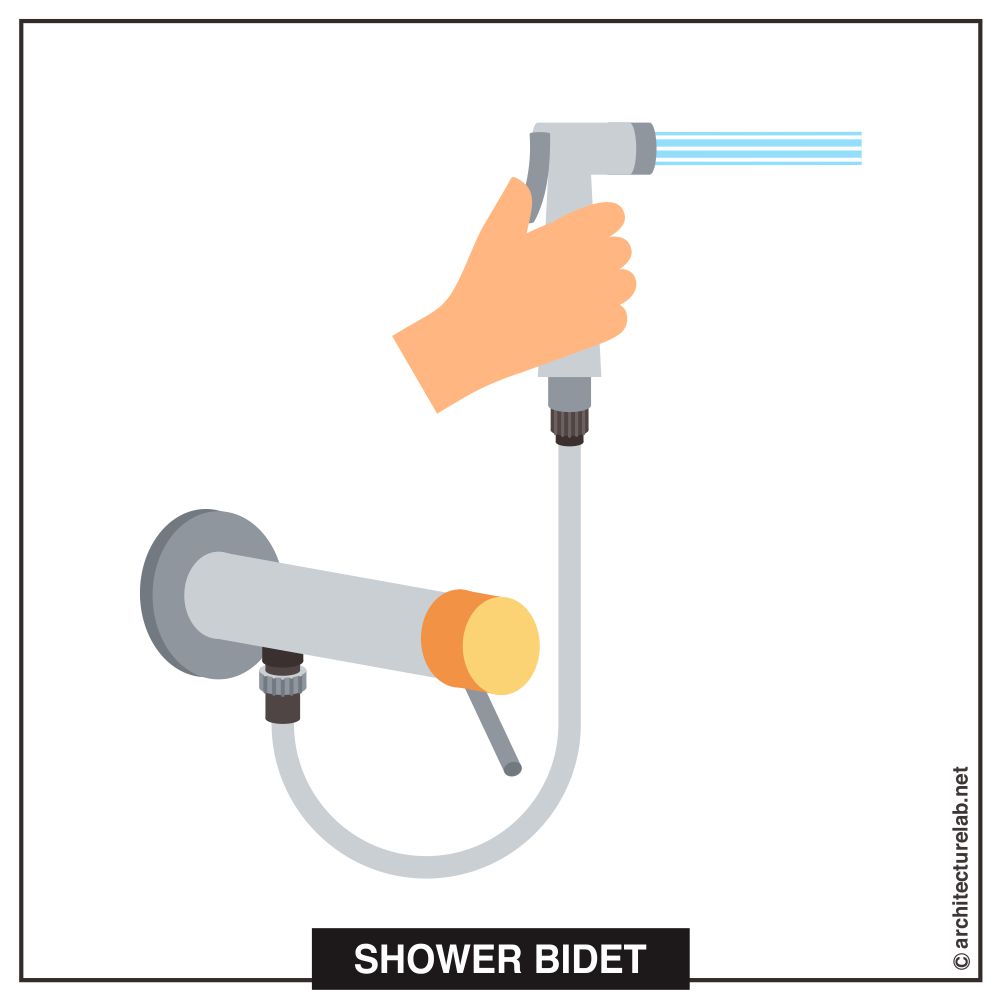
The shower bidet, or bidet shower, can be considered to be a sub-type of handheld bidet. While handheld bidets connect to the toilet, shower bidets connect to the shower instead.
Included in the packaging of these bidets is an 8-foot-long metal hose that reaches every part of a bathroom and a holding bolt and screw set. Since they connect to the shower, the degree of temperature and pressure control is higher. This may make them more suitable for those who prefer a higher-pressure or warm water bidet.
That said, managing the long hose can be a little impractical, as the user may need to leave the hose coiled close to the shower. Not only can this be a hassle while taking a shower, but it may also become tedious to fetch the apparatus to the toilet repeatedly.
8. Integrated Bidet Toilet
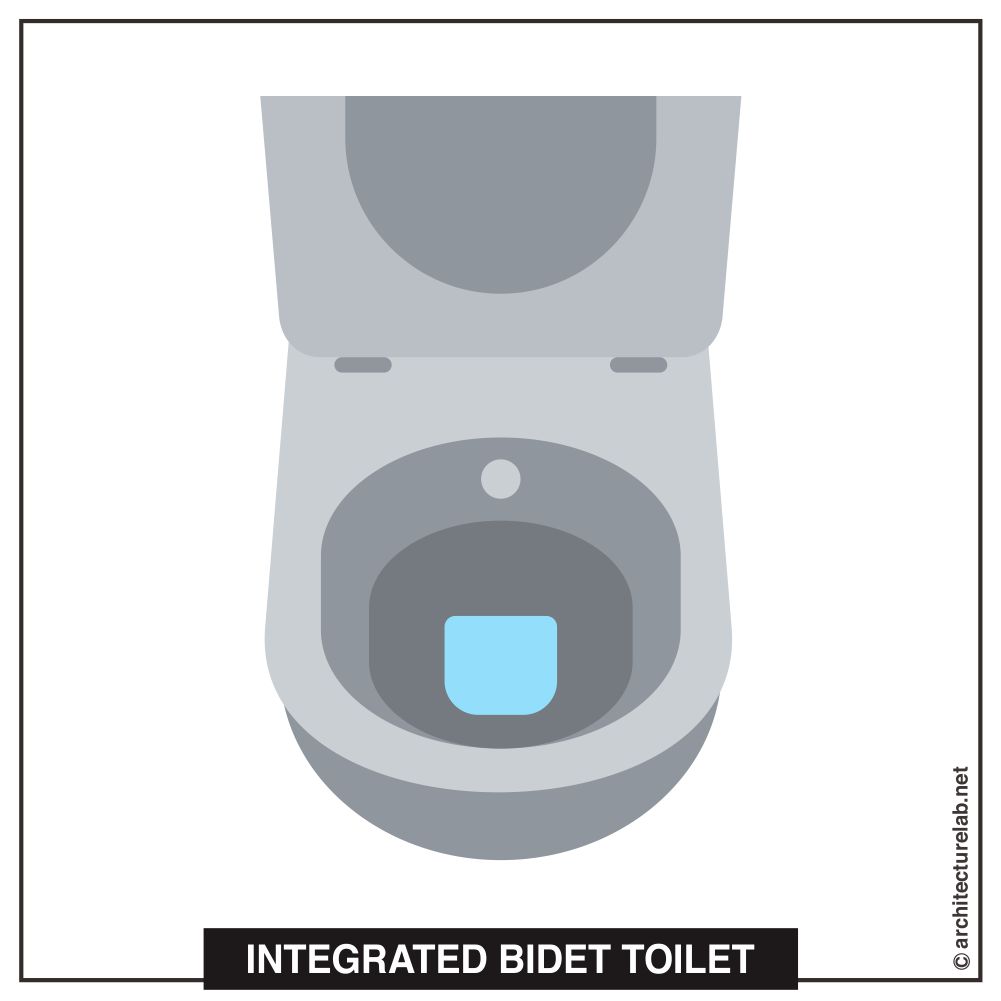
The integrated bidet toilet is a combination of a toilet and a bidet, incorporating all the features of each toilet fixture. These bidet toilets can be installed in every toilet, which makes them suitable for renovation projects and new home builds.
Since the bidet and toilet are combined into a single unit, a toilet-bidet combo consumes less space while offering features similar to standalone bidets.
A toilet-bidet combo shares installation steps with regular toilets, with the only additional requirement being an electrical outlet. The AC power plugs and sockets are required to run the more advanced features of the built-in bidet-toilet combos. These include water heating, a warm air dryer, a deodorizer, a night light, a heated seat for a cold toilet seat, etc.
9. Vertical Spray Bidet
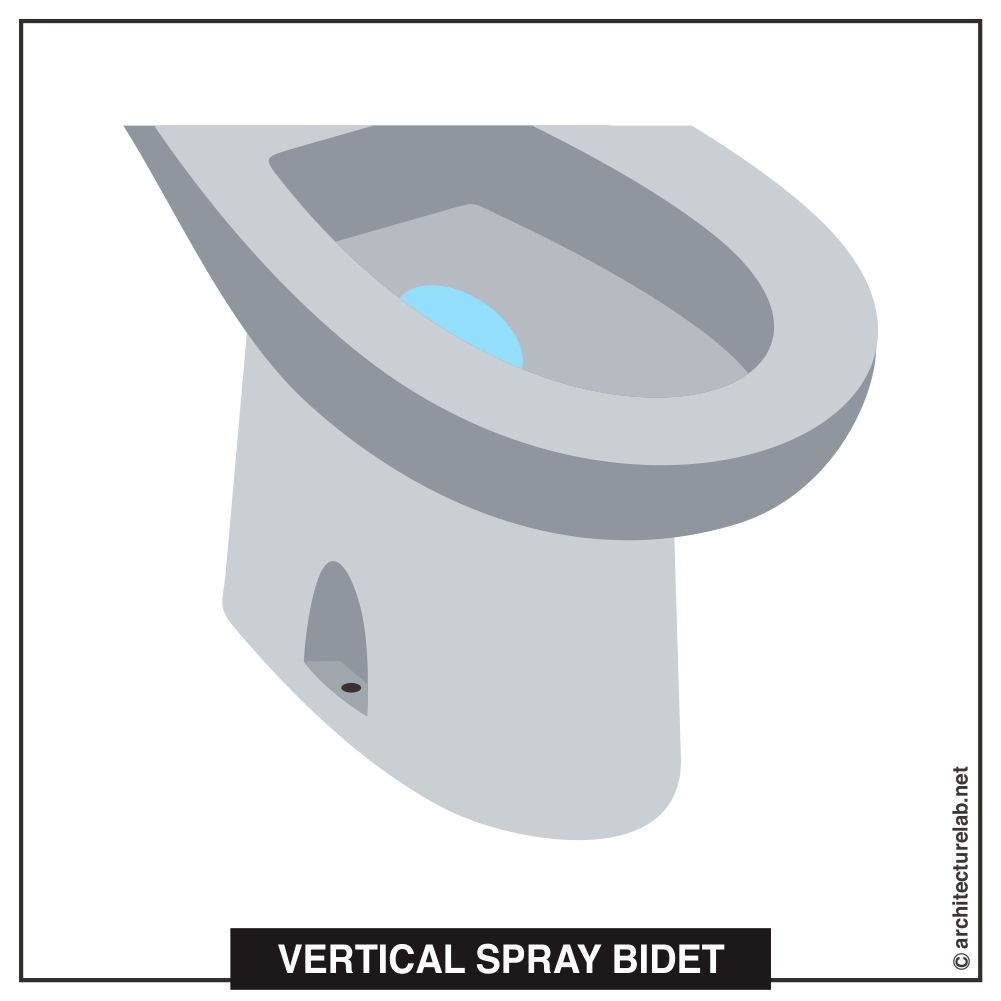
Sharing an overall structure similar to that of a freestanding bidet, a vertical spray bidet is a toilet apparatus that sprays water vertically. The spray nozzle is located at the center of the bidet unit, while the knobs controlling it are present at the rear end of the unit.
Much like a traditional ceramic bidet, vertical spray bidets are installed next to or close to the toilet for easy accessibility. Certain vertical spray bidet models can also be installed directly onto the toilet so that the person using it doesn’t leave the seat to use it. This is particularly useful for differently-abled people who may have difficulty accessing a standalone bidet after using the toilet.
Vertical spray ceramic bidets also include features commonly seen in modern freestanding bidets or electric bidet seats, such as heated seats, water massage, warm air dryers, etc.
10. Horizontal Spray Bidet
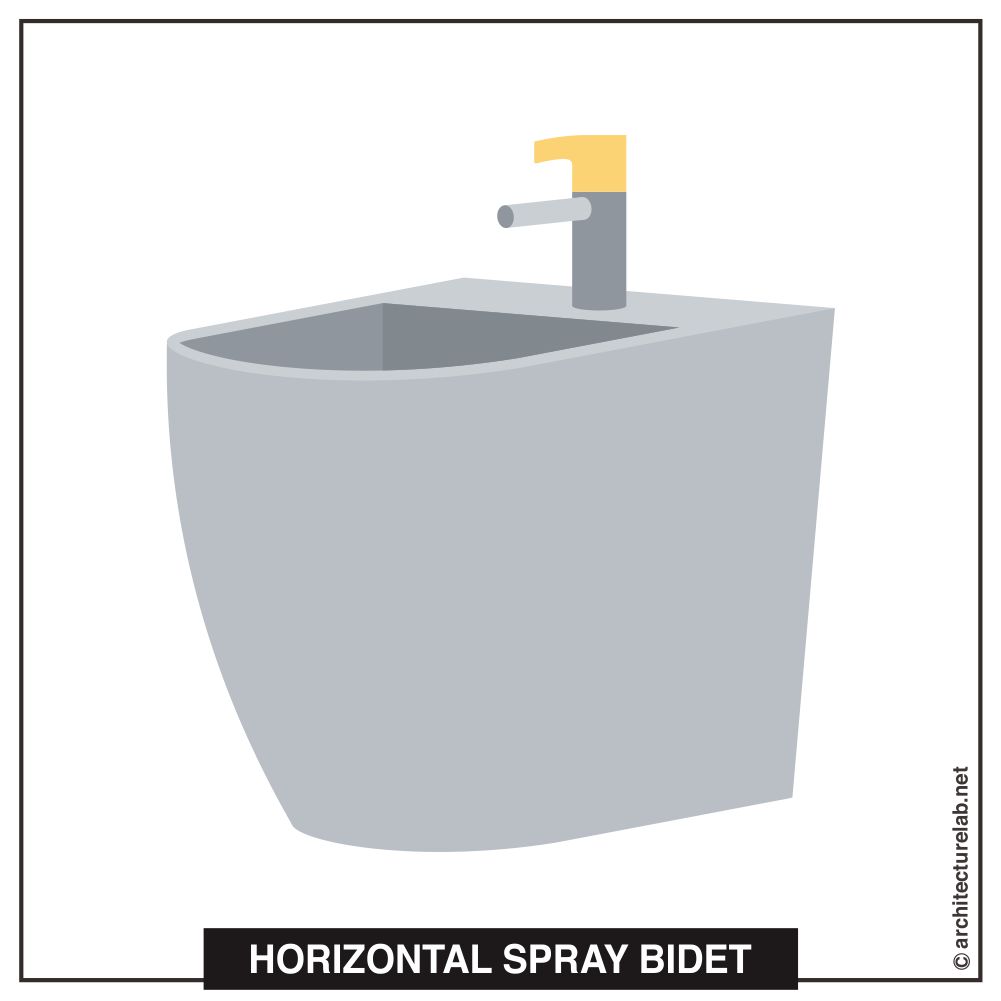
Horizontal spray bidets are nearly identical to vertical spray bidets, with the only difference being that these models have a nozzle over the bidet rim. This gives them a visual appearance similar to that of sink faucets or ceramic bidets and allows them to spray in a horizontal direction.
11. Pop-Up Bidet
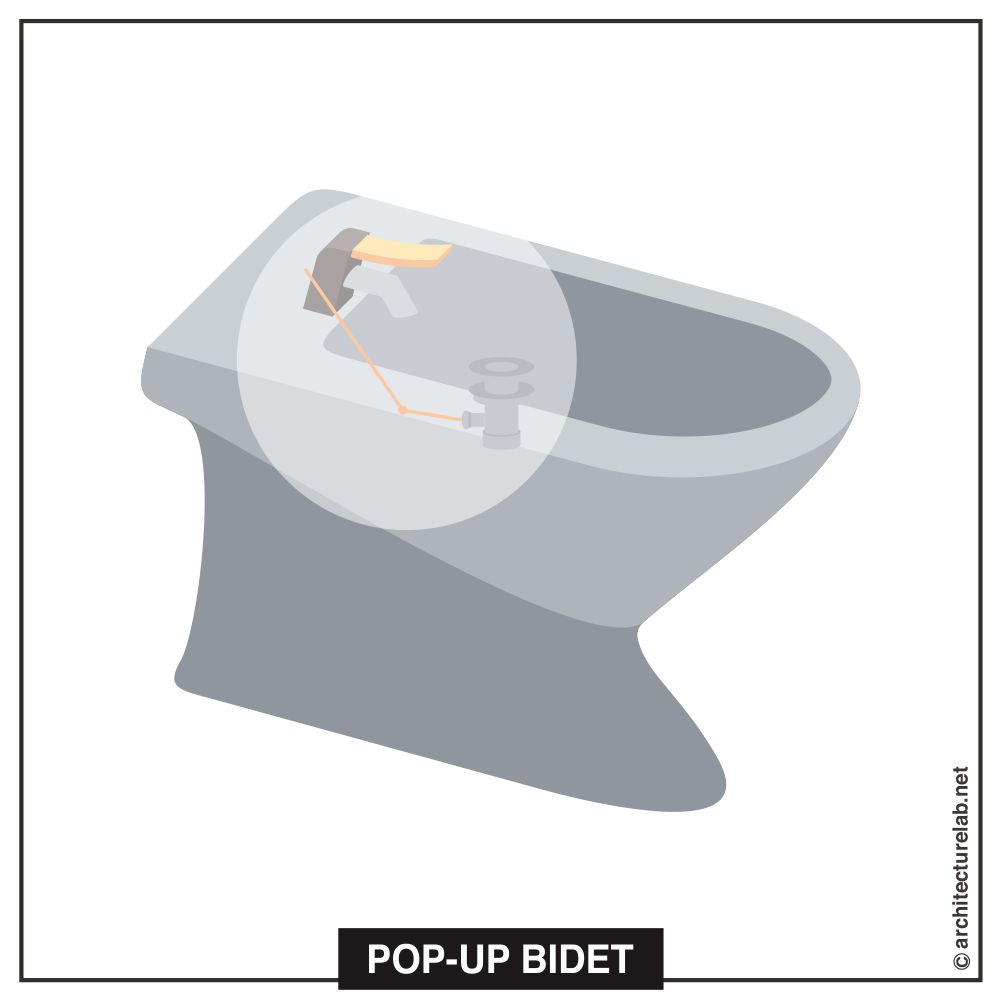
The pop-up bidet is a bathroom fixture that includes a waste management mechanism at the bottom of the bidet unit. As the name suggests, the mechanism pops up to allow wastewater and waste matter to flow through when needed.
The mechanism allows the user to determine whether they wish to pool hot or cold water to wash their body parts or use it as a standard bidet. It is operated through a lever that is typically positioned close to the fixtures that control the flow of water. By using the lever, the user can operate the pop-up mechanism without having to reach into the basin and lift it up manually.
The Health Benefits Of Bidets
Bidets offer various benefits for both the user and the environment, making them a valid alternative to toilet paper.
1. Improved Hygiene
Bidet usage has been found to be more hygienic than toilet paper since the stream from a bidet is more efficient at cleansing. As a result of this, the amount of bacteria culture in a person’s urine may drop, making the practice healthier for the bidet user.
2. Reduced Germ Spread
Bidets have the potential to limit the germ spread as the user’s hands do not come in contact with fecal matter. This reduced contact can prevent particles from spreading to different parts of the body through touch.
3. Environmentally Friendly
Bidet usage eliminates the need for toilet paper consumption entirely, preventing both paper and water wastage in the process. The amount of water required for an average bidet wash is significantly less than what is necessary to flush toilet paper. Thus, bidets impact the environment more positively and minimize any harmful impact that toilet paper may cause.
4. Better Bathroom Experience
Bidets contribute to a more satisfying bathroom experience for many. Wash-and-dry bidets, in particular, are popular because of how effective they are at cleansing.
5. Reduced Risk Of Certain Diseases
Bidets with medium or low water pressure can reduce the amount of pressure applied to one’s rear end, reducing the risk of diseases like hemorrhoids.
The Environmental Effects Of Bidet Use
The United States of America uses about 36.5 billion rolls of toilet paper every year, which is a significant expense for the country. To meet the supply demands, the resulting deforestation has a devastating impact on the environment. Moreover, flushing a single roll of toilet paper requires 37 gallons of water.
Tip
Switch to a bidet as it uses only a small fraction of the water used for flushing toilet paper. An average bidet requires around ⅛-gallon of water per wash, which is friendlier for the environment.
Non-electric bidets, in particular, are highly environmentally friendly. Since they don’t require electricity, their impact on the environment is a net positive.
Are there any disadvantages associated with bidet use?
The disadvantages of using a bidet are minor, being limited to modifications to existing plumbing and the discomfort of using one for the first time. These drawbacks can be considered to be a temporary inconvenience.
There are certain health concerns associated with bidets, particularly for people with weakened immune systems. But this is only an issue with warm electric bidets, where bacterial contamination can be possible.
How long does a bidet last?
A bidet seat can function normally for up to nine years, while a standalone bidet can continue running normally for even longer. Freestanding bidets have the potential to last up to 50 years if they are maintained well enough.
Is installing a bidet difficult?
Bidet installation may require extensive plumbing work if the model being installed is a freestanding one. Installing a standalone bidet may involve the use of a sealant, drill, washlet, residual-current device, and other basic equipment.
For bidet seats and attachments, the installation is fairly straightforward and requires a few minutes of work at most.
Bidets are flexible bathroom fixtures that can serve various purposes. They are a hygienic and environmentally friendly alternative to toilet paper that can be quite cost-effective as well.


